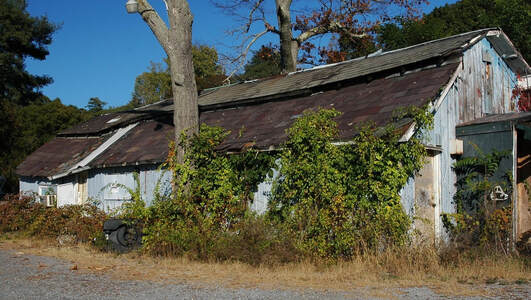History Blog
|
|
|
|
|
Editor's Note: This article was originally written by Anthony P. Musso and published in the November 1, 2017 issue of the Poughkeepsie (NY) Journal. For information about current ice boating on the Hudson River go to White Wings and Black Ice here.  Built in 1863 by John Aspinwall Roosevelt to store his ice yacht boat, Icicle, the boathouse was subsequently used as a bait and tackle shop before falling into disrepair. It still stands on the former Rosedale estate in Hyde Park, once home to Isaac Roosevelt, grandfather of Franklin D. Roosevelt. ANTHONY P. MUSSO Poughkeepsie Journal (Poughkeepsie, New York) · Wed, Nov 1, 2017 HYDE PARK - On the east bank of the Hudson River along River Point Road in Hyde Park is a long, wood-frame structure that once served as a boathouse for John Aspinwall Roosevelt, uncle of former U.S. President Franklin D. Roosevelt. The parcel of land the building sits on was once part of an estate named Rosedale, which was owned by the late president's grandfather, Isaac. Beginning in the mid- to late-18th century, wealthy families from New York City started to acquire large tracts of land to establish estates, many in Hyde Park. Names such as Bard, Roosevelt, Rogers, Langdon, Astor, Vanderbilt and Mills were among the most prominent. A popular pastime for many of them became ice-yacht racing along the Hudson River. While it proved to be an exciting spectator sport for residents in the area, the activity was quickly dubbed a “rich man’s hobby.” Following the death of Isaac Roosevelt in 1863, his son John inherited Rosedale and had the boathouse erected to house his vessel, named Icicle. A champion ice yacht racer, Roosevelt's boat — at 68 feet, 10 inches long and boasting a sail spread of 1,070 square feet — was the largest ice boat in the world at the time. “Icicle is now owned by the New York State Museum {Editor Note: "Icicle is on loan from the National Park Service Home of Franklin Delano Roosevelt] and is currently on loan to the [Hudson River] Maritime Museum in Kingston,” said Jeffrey Urbin, education specialist at the FDR Presidential Library and Museum. The boathouse featured six casement windows, a paneled wooden door and a board and batten-hinged door. The lower portion of its northern end was constructed of stone. The design of the boathouse was crafted specifically to store Roosevelt's ice yacht fleet while the space available above was occupied by sails. The building’s double-pitched roof provided additional space in the loft, in his younger years, FDR stored his 28-foot ice yacht, named Hawk, in the structure; the boat was a Christmas gift from his mother, Sara, in 1901. In 1861, at 21 years old, John Roosevelt founded and became the commodore of the Poughkeepsie Ice Yacht Club and, in 1885, he founded and held the same position with the Hudson River Ice Yacht Club. Both organizations still exist today. The area the boathouse occupies became known as Roosevelt Point and, during the latter part of the 19th and early 20th centuries, was used as the starting point for many world-class races held along the river. With a smaller version of the original Icicle — this one spanning 50 feet with a 750-square-foot sail area — John Roosevelt won the Ice Yacht Challenge Pennant of America in 1888, '89, ‘92 and ‘99. An additional structure that no longer exists at the site but once sat just south of the boathouse was known as the Roosevelt Point Cottage. Built in the 1850s as a tenant dwelling on the estate, records indicate that, from 1877 through 1886, it was occupied by Rosedale's gardener, Robert Gibson, The cottage maintained a front room that featured a stove, in which ice yacht enthusiasts could find warmth while waiting for a favorable wind to take their vessels on the river. “Ice yachting went into decline after 1912 as other pursuits, such as the automobile and airplane, captured the fascination of the public,” said John Sperr, of the Hudson River Ice Yacht Club. “World events were also a factor in the demise of ice yachting on the Hudson, as the onset of World War II found it necessary to keep the river open in winter so the large munitions and war material produced in Troy, Watervliet and Schenectady could be readily put into service.” The land the boathouse occupies was separated from Rosedale during the 1950s, when single-family homes were built on the former estate. Today, along with Isaac Roosevelt's house (located closer to Route 9), the boathouse remains vacant but an original remnant of the thriving 19th-century estate. If you enjoyed this post and would like to support more history blog content, please make a donation to the Hudson River Maritime Museum or become a member today!
0 Comments
Your comment will be posted after it is approved.
Leave a Reply. |
AuthorThis blog is written by Hudson River Maritime Museum staff, volunteers and guest contributors. Archives
July 2024
Categories
All
|
|
GET IN TOUCH
Hudson River Maritime Museum
50 Rondout Landing Kingston, NY 12401 845-338-0071 [email protected] Contact Us |
GET INVOLVED |
stay connected |
